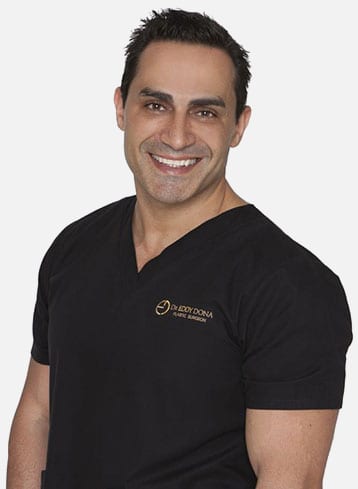Can a Tummy Tuck (Abdominoplasty) Repair a Hernia?
Tue 28th Jun 2022
Abdominal wall hernias around the belly button are very common. During surgery, Dr Dona will repair any abdominal wall hernias by closing up the hernia and tightening the muscles around it.
The first thing to appreciate is that abdominal wall muscle separation (diastasis recti) is very common especially after pregnancy, but this is not a hernia. It is an area of weakness along the midline and in some people, it can protrude ridge like down the midline when they strain. Repairing this involves tightening up and re-aligning the muscles to close this weakness.
What is an Abdominal Hernia?
A true abdominal wall hernia is a hole, or defect, in the abdominal wall through which the internal organs (typically fat and possibly bowel) protrude through. Abdominal wall hernias are common along this midline, and they are typically found at or near the belly button. These are a significant potential problem and ideally should be repaired due to the potential complications they can cause.
A hernia is often caused when straining or lifting heavy objects, this pressure on your internal organs can push them through the abdominal wall muscles, resulting in a bulge in the abdomen or around the belly button that can be quite painful. Abdominal wall hernias are more likely to occur if you have diastasis recti.
Symptoms of an Abdominal Hernia
The symptoms you may experience with an abdominal hernia can vary depending on the location of the hernia and its severity, but they may include:
- A bulge on the abdomen or more specifically, near the belly button
- The bulge may disappear when you are lying down
- Pain when straining the engaging core muscles or lifting heavy objects
Can a Hernia Be Repaired with Tummy Tuck (Abdominoplasty) Surgery?
Abdominal wall hernias are relatively common, and many people wanting a Tummy Tuck (Abdominoplasty) that also have hernias ask if the hernia can be corrected at the same time.
When performed by a general surgeon, the repair of these hernias can involve an incision within or near the belly button, and often the placement of a mesh to patch the hernia hole. This often means that the belly button has been completely detached from the underlying muscles. This has potential consequences as it can result in problems with the belly button if that patient was to later have a Tummy Tuck (Abdominoplasty). In simple terms, if you’ve had a previous repair of an umbilical hernia, and you then go on to have a Tummy Tuck, depending on how that previous surgeon repaired your hernia, you could end up with wound healing problems with your belly button. This basically means after the Tummy Tuck the belly button could ulcerate and die off, becoming a wound that takes many weeks to heal. This is because without knowing exactly what the previous surgeon has done, it is very easy to potentially cut off all the blood supply to the belly button.
So usually if someone wants a Tummy Tuck (Abdominoplasty) and has a small hernia, Dr Dona repairs it at the same time, and this would not require the use of any mesh. Of course, once the muscle tightening has also been done, you’ve re-enforced that hernia repair, so it therefore has minimal chance of recurring.
Should you get an abdominal hernia repaired before a Tummy Tuck (Abdominoplasty)?
The common surgical technique used for repairing abdominal wall hernias by general surgeons can significantly increase the risk of a belly button not surviving a Tummy Tuck (Abdominoplasty) procedure.
If you are wanting a Tummy Tuck (Abdominoplasty), and have an abdominal wall hernia, then as long as getting the Tummy Tuck does not delay you from having the hernia repair, they should be done at the same time. As mentioned above, having the hernia repaired before the tummy tuck does risk developing complications with your belly button after the Tummy Tuck.
